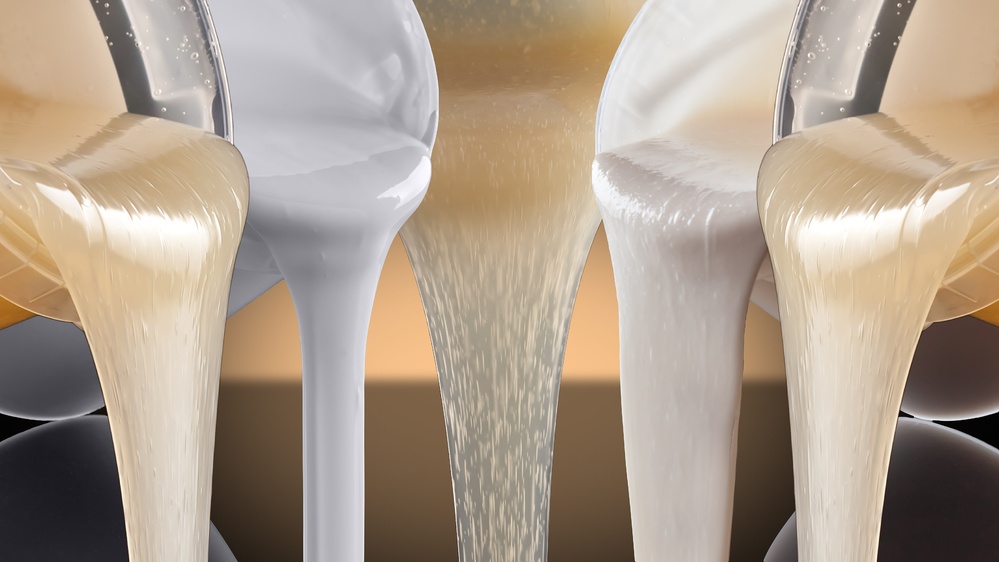With what to glue a label onto a plastic bottle
- Characteristics of an adhesive for PET bottle labels
- Which adhesive is better for a label on a PET bottle
- Properties of water-soluble adhesives for labels:
- Hot melt adhesives for applying labels onto a plastic bottle
- Properties of hot melt adhesives used for labelling:
- Hot melt adhesives, as per their composition, are of three types:
- How to choose an adhesive for labelling PET containers?
Among the entire variety of packages, polymer containers are in an advantageous position in the food industry. As to environmental friendliness and safety, PET bottles are inferior perhaps only to glass and cardboard packages. The high demand for plastic containers can be seen in the producers of beer, soft drinks and mineral water, as well as of cosmetic and household cleaning products. Producers often use PET containers because of the possibility of varying their design, and due to the ease and convenience of using the material.
According to legislative norms, labelling containers is obligatory, and the label should contain relevant information for consumers. The label is glued onto a package made of different materials: glass, plastics, paper and cardboard. Plastics have specific properties and characteristics; therefore, we recommend a responsible approach to choosing an adhesive to ensure that the label will not crease and will adhere securely to a surface.

Characteristics of an adhesive for PET bottle labels
When dealing with plastic containers, producers choose an adhesive that has the following advantages:
- Easy adhesive application by the production equipment.
- High adhesive strength. The adhesive should secure the label firmly on the container during transportation, storage and use.
- Resistance to moisture and temperature variations.
- Environmental friendliness and safe usage.
- Low consumption rate.
Which adhesive is better for a label on a PET bottle
For labelling, water-soluble adhesives based on starch, casein, semisynthetic, and synthetic materials are used. Besides, for industrial applications, hot melt adhesives based on EVA or metallocenes are used. The adhesive is chosen with account of the container material and the label, the goods storage conditions and the parameters of labelling equipment.
The Lux-X LLC adhesives product range includes the following water-soluble brands used for labelling: Lux-С, Lux-Д(D), Lux-К.

We recommend using synthetic and semisynthetic adhesives of the Lux-K brand for labelling PET bottles. These adhesives have a high capacity for bonding to a polymer surface. They are used for applying segment labels, as well as for overlap or edge-to-edge gluing of labels on PET containers.
The adhesive brands in this group can be used for both manual labelling and in labelling machines of different type with a labelling rate of up to 30,000 bottles per hour.
Properties of water-soluble adhesives for labels:
- Nontoxic, non-flammable, and the adhesive bond is resistant to ambient conditions;
- Do not oxidise and damage polymer and metal parts of equipment during operation.
- To ensure secure label adhesion, it is necessary to choose an adhesive that will match the materials to be bonded and to set up the equipment properly. Otherwise, the following problems may arise:
- Label ungluing. In this case, check once again the equipment setup, remove possible contamination and, if required, repair worn mechanism parts.
- Ungluing of label edges. We recommend applying the adhesive evenly onto the surface and adjust adhesive feed from the gluing roller to the pallet. If the labelling process is correct turn to the label maker to make certain that the labels are quality ones.
- Poor adhesive heating by the pump. Heat the adhesive to the required operating temperature. Use an adhesive with a better viscosity.
- Adhesive spattering and formation of threads on the surface. We recommend reducing the adhesive consumption rate or upgrading the gluing equipment.
Hot melt adhesives for applying labels onto a plastic bottle
Hot melt adhesives are used for applying labels onto PET bottles that, when filled with carbonated soft drinks, can enlarge in volume.
Prior to being used, the hot melt adhesive is heated to a required temperature for the glue to soften and acquire a viscous composition convenient for use.

Properties of hot melt adhesives used for labelling:
- Used in high-speed equipment of all types in operating conditions ranging from no-load conditions to 70,000 bottles per hour, with the equipment being kept clean.
- Used for labelling cold and moist PET bottles.
Hot melt adhesives, as per their composition, are of three types:
- Rubber-based hot melt pressure-sensitive adhesives (PSA). The adhesive is fit for labelling PET containers, and it is also is used for making self-adhesive labels.
- Ethylene vinyl acetate (EVA) copolymer-based adhesives are a widely used type of hot-melt adhesive. Depending on the area of application and the material to be glued, the EVA adhesive is produced to a definite formula because the adhesive composition has a direct effect on its properties.
- Adhesives based on metallocenes or alpha olefins. This adhesive is also known as one with a “self-cleaning effect”. Due to a unique chemical composition, the adhesive leaves no deposits, and the gluing equipment remains clean. These adhesives have no fillers and their consumption rate is lower than that of EVA-based adhesives due to a high content of basic components responsible for the glue adhesion.
How to choose an adhesive for labelling PET containers?
You can buy an adhesive for labelling plastic bottles directly from the producer Lux-X LLC by calling the number +38 (057) 766 06 36 or by filling in the feedback form on the lux-x.com website. Company specialists will help you choose a quality adhesive among the big variety of adhesives. When ordering an adhesive in industrial-scale volumes delivery is free-of-charge in Kharkiv and in other cities in Ukraine.







